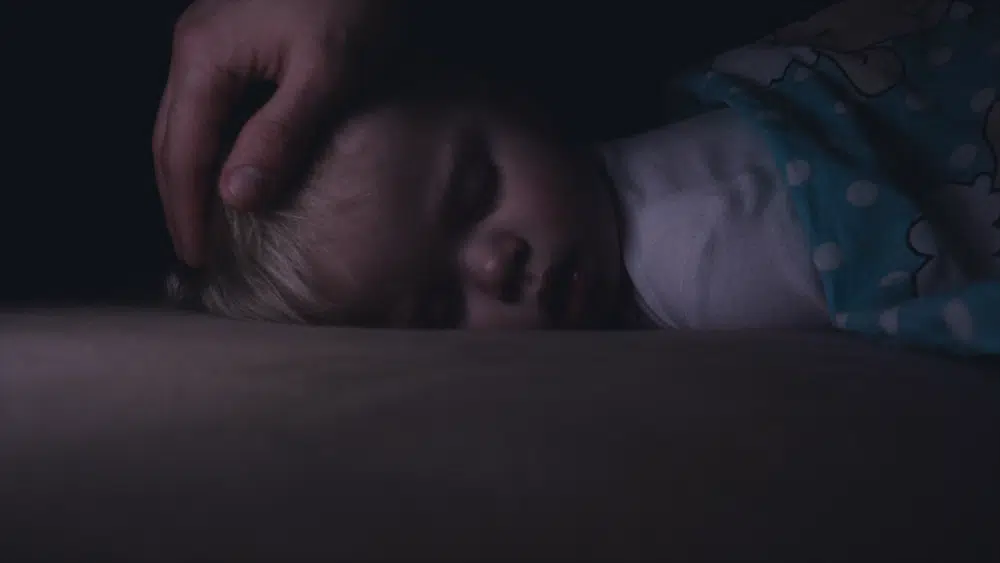Importance of a Sleep-Conducive Environment
Creating a dark and quiet sleep environment is essential for achieving restorative sleep. The quality of your sleep directly impacts your physical health, mental well-being, and overall quality of life. By optimizing your sleep environment, you can significantly enhance your sleep quality, leading to better health and increased productivity.
Overview of the Article
This article will provide a comprehensive guide on how to create a dark and quiet sleep environment. We will delve into the science of sleep, the benefits of darkness and quietness, practical steps to optimize your sleep environment, the role of technology, psychological impacts, and considerations for different age groups and cultural practices. By the end, you’ll have all the knowledge needed to transform your bedroom into a sanctuary for sleep.
The Science of Sleep
Understanding Sleep Cycles
Sleep is composed of several cycles, each with distinct stages including light sleep, deep sleep, and REM sleep. Understanding these cycles helps in recognizing the importance of an uninterrupted sleep environment.
The Role of Melatonin in Sleep
Melatonin is a hormone that regulates sleep-wake cycles. It is produced in response to darkness and signals to your body that it’s time to sleep. Proper melatonin production is crucial for maintaining a healthy sleep pattern.
Effects of Light and Noise on Sleep Quality
Exposure to light and noise during sleep can disrupt these cycles, leading to fragmented sleep. Light can suppress melatonin production, while noise can cause micro-awakenings that prevent deep sleep.
Benefits of a Dark Sleep Environment
Enhanced Melatonin Production
A dark sleep environment supports the natural production of melatonin. This hormone not only helps you fall asleep faster but also improves the quality of your sleep.
Improved Sleep Quality
Sleeping in complete darkness promotes deeper, more restorative sleep. It allows your body to go through all the necessary sleep stages without disruption, leading to better physical and mental health.
Better Overall Health
Quality sleep is linked to numerous health benefits, including a stronger immune system, better heart health, and improved mental clarity. By ensuring a dark sleep environment, you can enhance your overall well-being.

Benefits of a Quiet Sleep Environment
Reduced Sleep Disturbances
A quiet environment minimizes interruptions during the night. This is particularly important for maintaining the continuity of sleep cycles, which is essential for feeling refreshed in the morning.
Lower Stress Levels
Noise pollution is a known stressor. Reducing noise in your sleep environment can lower cortisol levels and promote a calmer, more peaceful sleep experience.
Improved Cognitive Function
Consistent, high-quality sleep supports brain health. A quiet sleep environment can enhance cognitive functions such as memory, concentration, and problem-solving skills.
Steps to Create a Dark Sleep Environment
Using Blackout Curtains
Blackout curtains are effective at blocking external light sources such as streetlights and early morning sunlight. They create a pitch-dark environment conducive to sleep.
Eliminating Electronic Light
Electronic devices emit blue light, which can interfere with melatonin production. Avoid using devices before bed and keep them out of the bedroom or use night mode settings to minimize light exposure.
Utilizing Sleep Masks
Sleep masks are a simple solution for blocking light, especially if complete darkness is hard to achieve. They are portable and can be particularly useful when traveling.
Proper Room Arrangement
Arrange your bedroom to minimize light exposure. Position your bed away from windows and light sources, and use dark-colored, thick fabrics for bedding and décor.
Steps to Create a Quiet Sleep Environment
Soundproofing Techniques
Soundproofing your room can significantly reduce noise pollution. Use heavy curtains, carpets, and upholstered furniture to absorb sound. Sealing windows and doors with weather stripping can also help.
Using White Noise Machines
White noise machines can mask disruptive sounds by producing a consistent ambient noise. Apps on smartphones can also serve this purpose effectively.
Managing Household Noise
Establish quiet hours in your household, especially during bedtime. Use soft-close mechanisms on doors and drawers, and keep noisy appliances away from the bedroom.
Importance of Quiet Bedding
Invest in high-quality bedding that doesn’t make noise when you move. Materials like soft cotton and bamboo are ideal for quiet, restful sleep.
Choosing the Right Sleep Accessories
Best Curtains for Blocking Light
Look for curtains made from thick, blackout materials. They should fit tightly against the window frame to prevent light from seeping through the edges.
Effective Sleep Masks
Choose sleep masks that fit comfortably and block all light. Masks with contoured shapes can prevent pressure on your eyes while ensuring complete darkness.
White Noise Machines and Apps
Select white noise machines that offer a range of sound options and volume controls. Apps can be a flexible and cost-effective alternative, providing similar benefits with added convenience.
Soundproofing Materials
Materials like acoustic panels, rugs, and draft stoppers can effectively reduce noise. These can be strategically placed around the bedroom to create a quieter environment.
Technology and Sleep
Impact of Electronic Devices
Electronic devices can significantly impact sleep quality by emitting blue light and stimulating the brain. Limit device use before bed to promote better sleep.
Managing Screen Time Before Bed
Implement a digital curfew an hour before bedtime. Engage in relaxing activities like reading a book or taking a bath instead.
Using Technology to Enhance Sleep
There are several technologies designed to improve sleep, such as smart lighting that mimics natural sleep patterns and sleep tracking devices that provide insights into your sleep quality.
Psychological Impact of a Dark and Quiet Sleep Environment
Reduced Anxiety and Stress
A dark and quiet environment can significantly reduce anxiety and stress levels, providing a calming effect that enhances the sleep experience.
Enhanced Relaxation and Calmness
Creating a tranquil bedroom environment promotes relaxation and helps you unwind, making it easier to fall asleep and stay asleep.
Better Emotional Regulation
Consistent, quality sleep improves emotional stability, helping you manage stress and anxiety more effectively during waking hours.

Common Myths and Misconceptions
Myth: Total Silence is Necessary
Total silence is not always necessary; some people find a certain level of ambient noise, like white noise, more conducive to sleep.
Myth: Only Insomniacs Need a Perfect Sleep Environment
Everyone can benefit from a sleep-conducive environment. It’s not just for those with sleep disorders; quality sleep is essential for overall health and well-being.
Misconception: Night Lights are Always Beneficial
While night lights can be helpful for children afraid of the dark, they can disrupt sleep by interfering with melatonin production in older children and adults.
Adapting to a Dark and Quiet Sleep Environment
Gradual Adjustment Tips
Make changes gradually to allow your body to adapt. Start by dimming lights earlier in the evening and using earplugs or white noise machines to get used to a quieter environment.
Overcoming Initial Discomfort
Initial discomfort is common when changing your sleep environment. Stick with the changes consistently, and your body will adapt over time.
Building a Consistent Sleep Routine
Establish a consistent bedtime routine that signals to your body that it’s time to sleep. This can include activities like reading, meditating, or listening to calming music.
Sleep Environment for Different Age Groups
Infants and Toddlers
Young children benefit from a dark and quiet environment to establish healthy sleep patterns early on. Use blackout curtains and sound machines to create a conducive sleep space.
Children and Adolescents
Older children and teenagers also need a good sleep environment to support their growth and academic performance. Encourage the use of sleep masks and quiet time before bed.
Adults and Seniors
Adults and seniors often experience changes in sleep patterns. A dark and quiet environment can help maintain sleep quality, especially for those with age-related sleep issues.
Cultural Considerations in Sleep Environments
Sleep Practices Around the World
Different cultures have unique sleep practices. Understanding these can offer new perspectives and methods for improving your sleep environment.
Adapting Cultural Preferences to a Dark and Quiet Environment
Incorporate aspects of your cultural sleep practices into a dark and quiet environment to make the transition smoother and more comfortable.
Balancing Tradition with Modern Sleep Science
Balance traditional sleep practices with modern sleep science to create an optimal sleep environment that respects your cultural heritage while promoting health.
Health Conditions and Sleep Environment
Sleep Disorders and Light Sensitivity
Individuals with sleep disorders or light sensitivity need a carefully controlled environment to improve sleep quality. Consult a healthcare provider for personalized advice.
Impact of Noise on Sleep Apnea
Noise can exacerbate sleep apnea symptoms. Creating a quiet sleep environment can help manage this condition more effectively.
Customizing the Sleep Environment for Specific Needs
Consider specific health needs when designing your sleep environment. This might include using specialized bedding or climate control for optimal comfort.
Environmental and Economic Factors
Sustainable Choices for Sleep Accessories
Opt for eco-friendly sleep accessories, such as organic cotton bedding and energy-efficient blackout curtains, to reduce your environmental footprint.
Budget-Friendly Tips for Creating a Sleep-Conducive Environment
You don’t need to spend a lot to improve your sleep environment. Simple changes like using thick blankets as blackout curtains and DIY soundproofing can be effective.
Energy Efficiency and Sleep Quality
Energy-efficient solutions like LED lights with dimming capabilities can enhance sleep quality while saving on energy costs.










